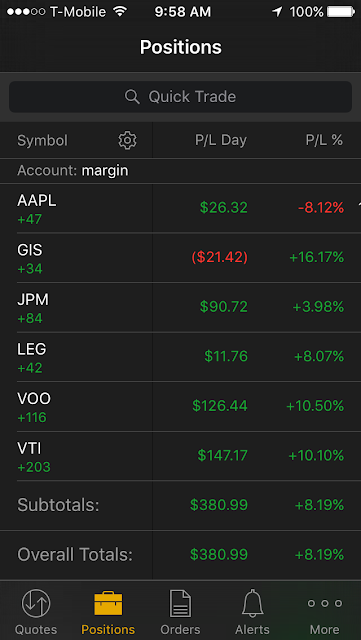Yup, talking about the $30 jawnt with the standard grill plates, Bruh!...and adjustable cooking angles. Adjustable angles is key because breakfast requires a flat grill unless you want to jerry-rig something to put under a non-adjustable grill. Anyways....
The benefits:
- It's easy to clean/wipe off aka less time cleaning. (time is valuable)
- Faster cooking...especially if you only use one frying pan in the morning. (time is valuable)
- May be energy efficient compared to traditional options (money is valuable)
- Dorm room convenient where you only need to wipe down with a paper towel, water...little soap on occasion. Just serve food on paper plates.(lifestyle convenient)
- Less hot grease popping on your skin. ( awesome!)
So, Let's get into it (excuse the low quality phots from my Samsung Prevail LTE, I don't have my iPhone available).
Flatten the grill...then plug-in and pre-heat the grill:
My foreman grill breakfast(s) are predicated on bacon grease, but you can use Pam, use butter, or use a little cooking oil for lubrication (no need to take chances). So here are the instructions for grilling bacon:
The grill times are for standard bacon such as:
Take the bacon straight out of the refrigerator and place it on a pre-heated foreman grill.
close the grill and come back after 2mins20secs:
The bacon after 2mins20secs:
Flip over the bacon and hen close the lid. Open the lid after 2mins20secs and the bacon is done:
Now, using the same bacon grease w/o cleaning the grill you can crack a couple of eggs over the grill for fried eggs (i'm using large eggs):
Once the bottom of the eggs hardens and the edges of the eggs get brown close the lid for 60-seconds. After 60-seconds the eggs look as follows:
flip the egg over and press down with a spatula while frying it a little more to make sure it is cooked to your liking or close the lid for an additional 30-seconds. It will look similar to the following:
I like to eat pizza rolls any meal so here is how you grill them (you don't need lubrication for this). Just place as many as you would like on the grill straight from the freezer:
Close the lid and come back 5mins later. The pizza rolls will be done and will look as follows:
Plate it and eat it:
If you are not into fried eggs and you can omelette it up w/ ingredients of your choice. I kept it basic w/ 2 large eggs, cheese, turkey lunch meat & hot sauce. Using the grease left over from the bacon pour the 2 large egg omelette mixture onto the grill towards the rear of the grill and be prepared to use a spatula to move the omelette back if it goes to far forward:
Once the bottom and edges firm up...work/fold over the omelette mixture towards the middle in a square-circle thingy as follows:
Then close the lid for 30-seconds (25 seconds if you want it less dark) and then open the grill:
Now plate and eat:
And if pizza rolls are not your thing for breakfast...You can do pancakes! I usually don't make them this small...but I am just showing you that you can control it just like a griddle. You may not have enough grease from the bacon after you grill your eggs so you can lubricate the bottom plate of the grill if you are worried about sticking. Pour the pancake mix and once it bubbles up as follows you want the close the lid for 30-seconds:
After the 30-seconds closure open the lid to see the following:
flip over the pancakes and then you can close the grill for another 15-seconds if the above picture is too light for you. On the flip the pancakes look as follows:
Plate and eat:
And by logic you can do french toast as well...but I don't have vanilla extract. You all can figure out the times for french toast if you are into such things for breakfast.
If you want to do it like Iceberg Gem...that's how you do breakfast easy peasy lemon squeezy! Even though most days I use my microwave egg poacher and just fry bacon and/or Brown&Serve sausage patties on the foreman grill to make a sandwich....But you can do it big on a standard foreman grill! I seen maybe one person do it like I do it on YouTube...so obviously this is an idea missing from the general public. Stove and a frying pan is so savage...i'm evolved. :-)

















































